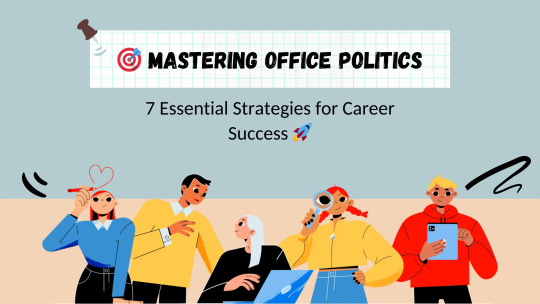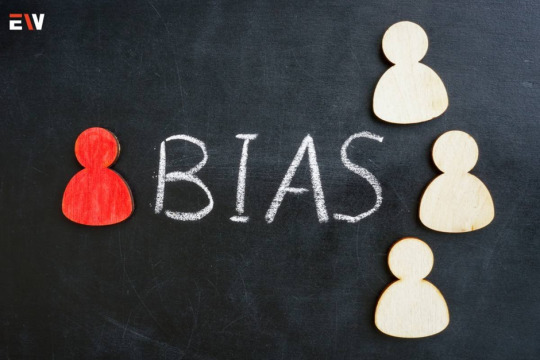#workplacedynamics
Explore tagged Tumblr posts
Text
Is Bureaucratic Leadership Good or Bad for Employees?

Source: Image by peshkov from Getty Images
Leadership plays a major role in shaping the way people work and achieve goals. Many leadership styles, but Bureaucratic leadership stands out for its strict structure and clear rules. This type of leadership appears in large organizations, government offices, and companies where routine and consistency matter the most. Let’s understand what this leadership style is, its key features, how it affects employees, and the pros and cons that come with it.
What Is Bureaucratic Leadership?
In this leadership style where leaders follow strict rules and policies. They make decisions based on guidelines, not personal ideas or emotions. This type of leadership sticks to the company’s structure. Every person knows their role, and no one goes outside their limits.
Bureaucratic leadership style works best in environments that require control, order, and regulation. Hospitals, military units, and government departments are good examples. In these places, leaders cannot take risks or make fast changes without following a proper process.
In this Leadership, trust lies more in the system than in the leader’s personality. The focus is on doing the job the “Right” way, as defined by the rules.
Characteristics of Bureaucratic Leadership
Image by Andrii Zastrozhnov from Getty Images
Some clear signs show that a leader uses the Bureaucratic Leadership style. These features shape how leaders work and how they manage their teams.
1. Rule-Based Decisions
Leaders make choices based on policies, laws, or formal procedures. They rarely depend on personal views or creative thinking.
2. Strict Hierarchy
There is a clear chain of command. Each person knows who to report to and what their role is.
3. Little Room for Innovation
Leaders expect employees to follow set ways. New ideas are not welcome unless approved through formal channels.
4. High Job Security
Because of fixed roles and procedures, employees feel stable in their jobs. Change is rare and slow.
5. Clear Job Roles
Everyone in the organization knows what they are supposed to do. Tasks do not overlap.
6. Focus on Efficiency
Leaders aim to keep things running smoothly. They prefer proven methods over new, risky ones.
Similar Article:
Lead with Confidence: 40 Transformative Leadership Quotes to Fuel Your Journey to Success
7 Best Books on Leadership to Inspire, Motivate, and Lead with Confidence
Style of Bureaucratic Leadership
This Leadership follows a very formal style. Everything goes through the right channel. Communication is top-down. This means leaders give instructions, and employees follow them. There is little back-and-forth discussion.
The leader rarely gets involved in personal matters or emotions. They care more about job performance, attendance, and how well employees follow rules. In this leadership style, you will see the leader:
Referring to a policy manual
Checking reports carefully
Avoiding favoritism
Expecting everyone to do things exactly as told
There’s no room for bending rules or making exceptions. This can keep work fair and organized, but it might also reduce employee motivation if people feel like they are only following orders without meaning.
Impact of Bureaucratic Leadership on Employees
Image by voyata
Leadership affects workers in many ways. Some employees may like the structure and feel secure. Others may find it limiting. This leadership style can lead to a loyal, stable team, but only if employees are happy with the lack of flexibility.
Positive Impacts:
Job Security: Employees know what to expect. Their role is clear, and their tasks don’t change often.
Clear Expectations: There is no guessing. Everyone knows the rules and how to succeed.
Fair Treatment: Because the system treats everyone equally, there is less chance of bias.
Negative Impacts:
Lack of Creativity: Workers may not share new ideas if they feel it’s not part of the process.
Low Engagement: Employees might not feel emotionally connected to their work.
Slow Growth: Career progress may depend on time served rather than talent or ideas.
Advantages and Disadvantages of Bureaucratic Leadership
The structure works well in stable settings, but it may not be suitable for tech firms or startups that need fast changes and flexible thinking. Let’s look at the strengths and weaknesses of Bureaucratic Leadership in a simple table:

Advantages
Disadvantages
Clear rules and structure help reduce confusion.
Employees may feel restricted by too many rules.
Low risk of favoritism or unfair treatment.
Creativity and innovation get blocked.
Helps maintain consistency in large organizations.
Decision-making is slow due to many approval levels.
Promotes stability and job security.
Employee morale may drop due to a lack of recognition.
Good for handling routine tasks and fixed jobs.
Not fit for fast-changing or modern work environments.
Example of Bureaucratic Leadership
A strong example of this Leadership can be found in
Government departments, such as the postal service. Employees follow strict rules for handling letters and packages. They wear uniforms, arrive on time, and complete tasks in a certain order.
Another example is the military. Commanders follow a fixed rank system. Orders are passed down clearly, and each person knows their responsibility. There is no room for creative freedom, but the system runs smoothly due to strict discipline.
You may notice Bureaucratic Leadership in hospitals also. Doctors, nurses, and staff follow set procedures to treat patients. The focus is on avoiding mistakes by following protocols.
When Bureaucratic Leadership Works Best
Image by fizkes from Getty Images
This Leadership works well in places where mistakes can cause big problems. For example:
In airline operations, rules and checks must be followed before take-off.
In pharmaceutical companies, drug creation must follow laws and safety rules.
In banks, security steps protect customer data and money.
Similar Article:
The Importance of Strategic Leadership
Autocratic Leadership: Characteristics, Pros, Cons, and Tips
Types of Leadership Styles: A Comprehensive Guide
Conclusion
Bureaucratic Leadership is not about being cold or harsh. It’s about ensuring that work gets done the right way, every time. This leadership style has been a backbone in many public services, large firms, and stable industries.
It brings structure, fairness, and security. But it also comes with limits. Creativity, speed, and employee satisfaction can suffer if rules take over everything.
Leaders today should ask: Do my employees need structure or flexibility? The answer depends on the work they do. A mix of leadership styles may help get the best results.
Bureaucratic Leadership still matters, but it works best when balanced with empathy and vision.
0 notes
Text
The Cost of Silence
Have you ever participated as a member of a team, gathered in a room, brainstorming for an important business strategy. There’s a lot of silence. Ideas are thrown out, but no one really feels strongly about them. Yet, when it’s time to make a decision, the group agrees on something that no one actually wants. Everyone assumes the others are on board with it, and no one speaks up to voice their…
#AbileneParadox#Accountability#BusinessStrategy#ChangeManagement#Collaboration#Communication#ConflictResolution#Consensus#CorporateCulture#CourageToDisagree#CriticalThinking#DecisionMaking#Denmark#Efficiency#EmployeeEngagement#Groupthink#Innovation#Leadership#management#NordicLeadership#OrganizationalBehavior#PainPointAnalysis#Psychology#RiskManagement#SilentConsensus#StrategyExecution#Teamwork#Transparency#WorkplaceCulture#WorkplaceDynamics
0 notes
Text
NAVIGATING CONTENTIOUS TOPICS AT WORK: THE BEHAVIOURAL AND COGNITIVE IMPACT
How do social and political issues shape workplace dynamics? From generational divides in political discussions to handling high-pressure environments, navigating sensitive topics requires thoughtful communication and clear policies. Real-world case discussions.
#framing#biases#EmotionalIntelligence#leadership#WorkplaceDynamics#WorkplaceCulture#EmployeeWellbeing#CorporateCulture#ConflictResolution#InclusiveWorkplaces#ProfessionalGrowth#DrShouryKuttappa
0 notes
Text
From T-Bag to Scofield: Navigating Workplace Personalities
From T-Bag to Scofield: Navigating Workplace Personalities.
A look at each character in the workplace of prison break. This is entirely based on my opinion. T-Bag (Theodore Bagwell) doesn’t mind sacrificing his whole team for the top position. He is not an ideal team player and is not reliable. This employee usually obtains incriminating information about leaders or people in authority and blackmails them with it, hence you would find him in rooms you…

View On WordPress
0 notes
Text
In project management the role of a project coordinator has become increasingly important. Acting as the glue that holds various aspects of a project together, project coordinators facilitate communication, organization, and execution, ensuring that projects are completed efficiently and successfully. Let’s delve into the key responsibilities, skills, and significance of this role in driving project success.
#ProjectManagement#ProjectCoordinator#TeamCollaboration#ProjectSuccess#Leadership#OrganizationalSkills#Communication#ProblemSolving#Efficiency#WorkplaceDynamics
0 notes
Text

‘There are people at work that will energise you while others will drain your energy. Understanding the type of colleagues around you will help you deal with them more effectively.
0 notes
Text
🎯 Mastering Office Politics: 7 Essential Strategies for Career Success 🚀

Office politics—it's a term that often evokes a mixture of fear, frustration, and confusion. Yet, it's an inescapable aspect of professional life. Whether you're a fresh graduate stepping into your first job or a seasoned professional climbing the corporate ladder, understanding and adeptly navigating office politics can make a significant difference in your career trajectory. Here's how to transform these tricky dynamics into opportunities for growth and success.
1. Understand the Landscape 🗺️
Before you can navigate office politics, you need to understand the terrain. Every workplace has its unique culture, power structures, and unwritten rules. Take the time to observe:
Key Players: Identify the influencers, decision-makers, and those with informal power.
Relationships: Pay attention to alliances, rivalries, and how people interact with each other.
Norms and Values: Understand what behaviors are rewarded and which are frowned upon.
2. Build Genuine Relationships 🤝
Networking isn't just for job hunting; it's a vital part of thriving in any organization. However, effective networking in the context of office politics isn't about being manipulative; it's about building genuine, mutually beneficial relationships.
Be Approachable: Smile, greet colleagues, and engage in small talk to build rapport.
Show Interest: Ask about their projects and listen actively. People appreciate genuine interest in their work and opinions.
Offer Help: Be willing to assist others without expecting immediate returns. This builds goodwill and trust.
3. Stay Professional 💼
Maintaining professionalism is crucial in navigating office politics. It sets the tone for how others perceive and interact with you.
Be Reliable: Meet deadlines, follow through on promises, and be consistent in your work quality.
Communicate Effectively: Clear, concise, and respectful communication can prevent misunderstandings and build your reputation as a competent professional.
Stay Neutral: Avoid gossip and refrain from taking sides in conflicts. Being perceived as impartial can protect you from unnecessary drama.
4. Leverage Emotional Intelligence 🧠
Emotional intelligence (EQ) is your superpower in the political landscape of the office. It involves understanding and managing your emotions and those of others.
Self-Awareness: Recognize your triggers and manage your reactions.
Empathy: Understand and consider the feelings of your colleagues. This can help in resolving conflicts and building strong relationships.
Social Skills: Use your EQ to navigate social complexities and influence others effectively.
5. Be Strategic 🥇
Strategic thinking is key to successfully navigating office politics. It's about being aware of the bigger picture and aligning your actions accordingly.
Set Clear Goals: Know what you want to achieve and plan how to get there.
Pick Your Battles: Not every issue is worth fighting for. Prioritize what's important and let go of trivial matters.
Seek Allies: Build alliances with people who share your goals or values. There's strength in numbers.
6. Maintain Integrity 🛡️
In the often murky waters of office politics, your integrity is your anchor. Staying true to your values and ethics will help you navigate challenges without compromising your principles.
Be Honest: Honesty fosters trust, which is essential in any professional relationship.
Stay Authentic: Be yourself, and don’t try to be someone you're not just to fit in or gain favor.
Hold Yourself Accountable: Take responsibility for your actions and decisions. This builds respect and credibility.
7. Adapt and Evolve 🌟
Office politics is not static; it evolves with changes in leadership, organizational structure, and team dynamics. Stay adaptable and be willing to evolve your strategies as needed.
Continuous Learning: Stay updated with industry trends and organizational changes.
Feedback: Seek feedback regularly and use it to improve your approach.
Resilience: Develop resilience to bounce back from setbacks and stay focused on your long-term goals.
Conclusion 🎉
Navigating office politics is an art that combines observation, relationship-building, strategic thinking, and unwavering integrity. By mastering these skills, you can turn the challenges of office politics into opportunities for professional growth and success. Remember, it's not about playing dirty or compromising your values; it's about understanding the dynamics at play and using them to your advantage ethically and effectively.
Embrace the journey, and let the landscape of office politics become the backdrop for your professional triumphs.
#OfficePolitics#CareerSuccess#WorkplaceDynamics#ProfessionalGrowth#LeadershipSkills#CareerAdvice#CareerDevelopment
0 notes
Text
Adnan Vadria's The Impact of Remote Work on Commercial Real Estate Demand and Design
In this podcast exploration of commercial real estate dynamics, Adnan Vadria sheds light on the profound effects of remote work on the industry's demand and design. As the world transitions into a new era of work flexibility, understanding these changes is paramount for investors, developers, and stakeholders alike.
#adnanvadria#commercialrealestate#remotework#workplacedynamics#realestateinvestment#flexiblespaces#technologyintegration
0 notes
Text
Uncomfortable Questions, Unmet Expectations: Dissecting the Kelly Rowland & Savannah Guthrie 'Today' Show Drama
☕️ Tension brewed on the "Today" show as Kelly Rowland abruptly left after an interview with Savannah Guthrie. Was it the dressing room drama or something deeper? We dive into the reported reasons, unpack the complexities of navigating microaggressions in the workplace, and explore the importance of setting boundaries for self-respect. Join the conversation: How can we create more inclusive and respectful spaces for all? #KellyRowland #SavannahGuthrie #TodayShow #WorkplaceDynamics #SelfRespect #FierceEmpowerment #FierceCareer #FierceMillennial
The internet buzzed with speculation after Kelly Rowland’s sudden departure from the “Today” show following an interview with Savannah Guthrie. While initial reports attributed the exit to dissatisfaction with the dressing room, insiders revealed a more nuanced issue: persistent questions about Beyoncé. This sparked important conversations about microaggressions, workplace boundaries, and the…

View On WordPress
#BlackWomen#empowerment#Fierce Career#FIERCE EMPOWERMENT#FIERCE MILLENNIAL#InclusiveWorkplaces#KellyRowland#Microaggressions#SavannahGuthrie#SelfRespect#TodayShow#WorkplaceDynamics
0 notes
Text

Q: Who is the most cunning person in the workplace? 🕵️♂️💼🤔
A: The dynamics of workplace relationships are often complex, with intense competition and not everyone who engages in friendly banter is truly considering you a friend; some may view you merely as a tool for their advantage.
Read details at https://ngocnga.net/zi-wei-dou-shu-qa-who-is-the-most-cunning-person-in-the-workplace/?utm_source=tumblr&utm_medium=social&utm_campaign=ziwei
#CunningColleague#WorkplaceDynamics#ObservationSkills#ziweidoushu#zwds#purplestar#purplestarastrology#chineseastrology#chinesemetaphysics#metaphysics#astrology
1 note
·
View note
Text
youtube
Why Do Public Sector Problems Keep Getting Ignored? Here’s What’s Really Going On Why Staff Don’t Speak Up in the Public Sector #publicsectorfailures #workplacedynamics #circleoftrust This video shows why people often stay silent at work, even when they know something is wrong. Here’s what you’ll find in this series: Video 1, you’ll see the story of Aaron, which, though heavily edited, is based on a true story. YOU ARE HERE - Video 2 looks at the workplace to try and understand what is going on. Video 3 sees the role that low trust plays in the workplace. Video 4 looks at rebuilding trust, with two practical examples. Video 5 gives one more example, this time concerning ethical leadership. It explains how in large organisations, like hospitals or police forces, the strict rules, ranks, and even close staff relationships can contribute to stop people from speaking up. This helps explain why public scandals keep happening. 🔔𝐃𝐨𝐧'𝐭 𝐟𝐨𝐫𝐠𝐞𝐭 𝐭𝐨 𝐬𝐮𝐛𝐬𝐜𝐫𝐢𝐛𝐞 𝐭𝐨 𝐨𝐮𝐫 𝐜𝐡𝐚𝐧𝐧𝐞𝐥 𝐟𝐨𝐫 𝐦𝐨𝐫𝐞 𝐮𝐩𝐝𝐚𝐭𝐞𝐬. https://www.youtube.com/@ChangeLevers/?sub_confirmation=1 🔗 Stay Connected With Us. Website: https://ift.tt/cOCFa6s 📩 For business inquiries: [email protected] ============================= 🎬Suggested videos for you: ▶️ https://www.youtube.com/watch?v=MJ-c9LyMc1w ▶️ https://www.youtube.com/watch?v=N7DK_FdfepE ▶️ https://www.youtube.com/watch?v=NkYiBuRJEOc ▶️ https://www.youtube.com/watch?v=uWtmmOuRdXg ▶️ https://www.youtube.com/watch?v=KY38BP64OOo ================================= ================================= 🔎 Related Phrases: Why Do Public Sector Problems Keep Getting Ignored, Here’s What’s Really Going On, What Causes Organizational Scandals In Government, Real Reasons Staff Stay Silent At Work, Why Hierarchy Blocks Workplace Change, Public Sector Scandals, Workplace Dynamics, Staff Hierarchy, Organizational Failure, Workplace Politics, Trust, Silence, Rank, Rules, Culture, Conflict, Leadership, Speaking Up, Barriers, Hashtags #publicsectorfailures #whypeopledonotspeakup #staffsilence #workplacedynamics #circleoftrust #toxicstructure #hierarchyissues #brokenworkplaces #whytrustfails #publicscandals #organizationalproblems #workplaceissues https://www.youtube.com/watch?v=KKh9zXLGXqc via Change Levers https://www.youtube.com/channel/UCJwf8ylrfE-11bK184H4ZAQ May 22, 2025 at 10:48PM
#workplacesafety#toxicworkplace#circleoftrust#workplacetrust#staffmorale#wastemanagement#publictrust#employeevoice#Youtube
0 notes
Text
Unveiling the Power of Unconscious Bias Training: Building Inclusive Workplaces

The recognition and mitigation of unconscious bias have become imperative for fostering inclusivity and promoting equality. Unconscious bias training has emerged as a proactive strategy to address ingrained biases that may unknowingly influence decision-making processes. In this article, we will delve into the concept of unconscious bias, explore the significance of training programs, and discuss how organizations can create more inclusive environments through awareness and education.
Understanding Unconscious Bias
Unconscious bias refers to the automatic, unintentional judgments and stereotypes that individuals hold about others based on characteristics such as race, gender, age, and ethnicity. These biases are deeply ingrained and can impact various aspects of our lives, including the workplace. While they are often unintentional, unconscious biases can lead to unfair treatment, hinder diversity, and create barriers to equal opportunities.
Common Types

Affinity Bias: Preferring individuals who share similar backgrounds, interests, or experiences.
Confirmation Bias: Seeking information that confirms pre-existing beliefs or stereotypes.
Halo Effect: Allowing positive impressions of a person in one area to influence perceptions in other unrelated areas.
Stereotype Threat: Acting in a way that conforms to stereotypes due to the fear of confirming them.
The Significance
1. Creating Awareness
The first step in addressing unconscious bias is to create awareness. Unconscious bias training programs aim to educate employees about the existence of biases, helping them recognize and understand their own preconceptions. By fostering self-awareness, individuals become better equipped to manage their biases and make more objective decisions.
2. Fostering Inclusivity
Unconscious bias training goes beyond mere awareness; it equips employees with the tools to actively challenge and counteract biases. This proactive approach fosters a more inclusive workplace culture where diversity is not only acknowledged but celebrated. Inclusive environments are more likely to attract and retain diverse talent, promoting innovation and creativity.
3. Improving Decision-Making
Unconscious biases can significantly impact decision-making processes, from hiring and promotions to project assignments. Training programs provide practical strategies to minimize bias in decision-making, ensuring that evaluations are based on merit, skills, and qualifications rather than unconscious assumptions.
4. Strengthening Team Dynamics
How to Use Disagreement to Build Team Strength?
The business world is characterized by collaborative endeavors. In this pursuit of excellence, disagreement among the team members is imperative. But on the flip side, these disagreements can also fuel growth and innovation.
Read more:
Best Practices for Effective Unconscious Bias Training
1. Customization for Relevance
Unconscious bias training should be customized to the specific needs and context of the organization. Generic training programs may not resonate as effectively with employees. Tailoring content to address industry-specific biases and incorporating real-life examples can enhance relevance and engagement.
2. Interactive and Engaging Methods
Traditional training methods can be less effective in capturing the attention and engagement of participants. Incorporating interactive elements such as case studies, group discussions, and role-playing scenarios can make the training more dynamic and impactful.
3. Continuous Learning

Addressing unconscious bias is an ongoing process. Organizations should embrace the idea of continuous learning by providing follow-up sessions, resources, and opportunities for employees to reinforce their understanding of unconscious bias. Regular updates and refreshers help embed inclusive practices into the organizational culture.
4. Leadership Commitment
For the bias training to be successful, it requires commitment from the top. Leaders should actively participate in and support these initiatives, emphasizing the importance of creating a bias-free workplace. When leaders exemplify inclusive behavior, it sets the tone for the entire organization.
Challenges and Criticisms
1. Resistance and Skepticism
Some employees may resist unconscious bias training, viewing it as unnecessary or questioning its effectiveness. Overcoming skepticism requires clear communication about the purpose of the training and the tangible benefits it can bring to individuals and the organization as a whole.
2. Potential for Backlash
In some cases, poorly designed or executed training programs can lead to backlash. It is essential to approach training with sensitivity, avoiding a punitive tone and instead emphasizing the positive impact that bias awareness can have on individual growth and organizational success.
Best Practices for Overcoming Challenges
1. Interactive and Personalized Learning Platforms
Leveraging technology, organizations can utilize interactive and personalized learning platforms for unconscious bias training. These platforms can offer tailored content, quizzes, and real-time feedback, ensuring that employees remain engaged throughout the training process. Such platforms can also provide continuous learning opportunities, allowing employees to revisit and reinforce their understanding of unconscious bias over time.
2. Diversity and Inclusion Champions

Designating individuals within the organization as diversity and inclusion champions can help overcome resistance to unconscious bias training. These champions act as advocates, sharing success stories, and serving as visible examples of the positive impact of embracing diversity. Their involvement helps create a grassroots movement within the organization, making the acceptance of bias training more widespread.
3. Incorporating Case Studies and Real-Life Examples
Embedding real-life case studies and examples within unconscious bias training programs makes the content relatable and tangible. Sharing stories of organizations that have successfully navigated and overcome bias-related challenges provides employees with practical insights and inspiration, reinforcing the importance and relevance of the training.
4. Inclusive Language and Imagery
When designing and delivering unconscious bias training, organizations should be mindful of using inclusive language and imagery. Ensuring that training materials reflect the diversity of the workforce helps create a sense of belonging for all employees. This attention to detail reinforces the commitment to inclusivity throughout the training process.
Conclusion
Unconscious bias training stands as a powerful tool in the journey toward more inclusive and equitable workplaces. By raising awareness, fostering self-reflection, and providing practical strategies for overcoming biases, organizations can create environments where diversity is not just acknowledged but celebrated. As the business landscape continues to evolve, embracing diversity and inclusion is not just a moral imperative but a strategic advantage. This training is a crucial step in ensuring that organizations harness the full potential of their diverse talent, fostering innovation, and achieving sustainable success in an increasingly interconnected and diverse world.
#teamwork#BiasAwareness#innovation#training#workplacedynamics#equality#diversity#inclusion#biastraining
0 notes
Text
Trying to Befriend Your Manager? This Could Get Hilariously Risky!
WorkplaceDynamics #ManagerRelationship #OfficeCulture #CareerTips #Zebu
friendship with manager, workplace relationships, office etiquette, professional boundaries, boss and employee dynamic, how to talk to your manager.
#zebu#finance#investment#investwisely#financialfreedom#investing#investors#makemoney#investmentgoals#mutual funds
0 notes
Text
youtube
How Can You Achieve Promotion in a Competitive Workplace? 🚀 by Mistico Traveler - Discover. Transform. Thrive Discovering a Life of True Freedom: https://ift.tt/jxDLaEA. Feeling overlooked for promotions despite strong performance? Discover the importance of aligning with your organization's culture and values. Explore your options—adapt to the environment or seek a better fit. Your talent deserves recognition; it's time to take control of your career path. #CareerDevelopment #WorkplaceSuccess #PromotionStrategies #ProfessionalGrowth #OrganizationalCulture #ValueYourself #CareerAdvice #AlignedValues #WorkplaceDynamics #LeadershipSkills via YouTube https://www.youtube.com/watch?v=UZ4I7MNsSHE
0 notes
Text
You see it on corporate campuses everywhere:...
You see it on corporate campuses everywhere: two coworkers in competition for resources, talent, or assignments. With 62% of employees reporting a workplace nemesis, the challenge is figuring out how to manage the situation effectively. https://krnfy.bz/3MPaRL0 \#workplacedynamics \#conflictresolution \#teamwork
You see it on corporate campuses everywhere:...
You see it on corporate campuses everywhere: two coworkers in competition for resources, talent, or assignments. With 62% of employees reporting a workplace nemesis, the challenge is figuring out how to manage the situation effectively. https://krnfy.bz/3MPaRL0 {hashtag|\#|workplacedynamics} {hashtag|\#|conflictresolution} {hashtag|\#|teamwork}
Korn Ferry Connect
0 notes
Text
You see it on corporate campuses everywhere:...
You see it on corporate campuses everywhere: two coworkers in competition for resources, talent, or assignments. With 62% of employees reporting a workplace nemesis, the challenge is figuring out how to manage the situation effectively. https://krnfy.bz/3MPaRL0 \#workplacedynamics \#conflictresolution \#teamwork
You see it on corporate campuses everywhere:...
You see it on corporate campuses everywhere: two coworkers in competition for resources, talent, or assignments. With 62% of employees reporting a workplace nemesis, the challenge is figuring out how to manage the situation effectively. https://krnfy.bz/3MPaRL0 {hashtag|\#|workplacedynamics} {hashtag|\#|conflictresolution} {hashtag|\#|teamwork}
Korn Ferry Connect
0 notes